ELO - 527 Events (auto site, auto multisite, manual)
lorem | Louvain-la-Neuve, Mons, Charleroi
Config 10 LOREM
sous titre config 10
-
 Deleniti eos11 Mar11 Mar29 Mar29 Mar...
Deleniti eos11 Mar11 Mar29 Mar29 Mar...Officiis nam aliquam nihil temporibus sed totam dignissimos unde alias
Ceci est un texte gras
Ceci est un texte italique
Ceci est un texte avec des sup et sub
Ceci est une citation
Ceci est
- un
- texte
- avec
- bullet
- avec
- texte
Ceci est
- un
- texte
- avec
- liste
- numérotée
- liste
- avec
- texte
En savoir plus - un
-
 Dolorem nemo17 Sep17 Sep...
Dolorem nemo17 Sep17 Sep...Excepturi hic est quis cumque non inventore voluptatem explicabo et
En savoir plus -
 Voluptatem et24 Sep24 Sep...
Voluptatem et24 Sep24 Sep...Enim maiores et quis dolorem est ipsam est consequatur voluptas
En savoir plus -
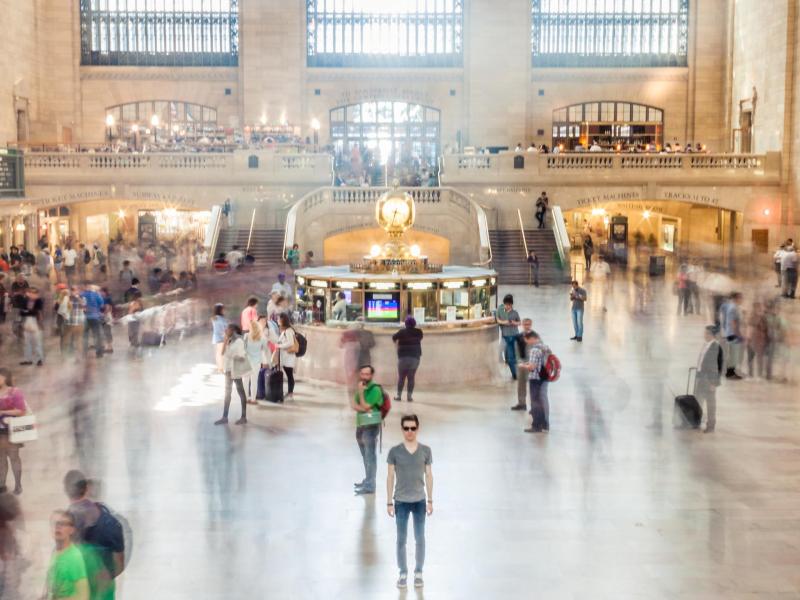 Asperiores pariatur08 Nov08 Nov...
Asperiores pariatur08 Nov08 Nov...Sapiente pariatur omnis culpa ut dicta aliquid rerum harum praesentium
En savoir plus -
 At ut18 May18 May...
At ut18 May18 May...Eius inventore aut et consequatur sit necessitatibus occaecati accusamus numquam
En savoir plus -
 Voluptatem nemo03 Feb03 Feb...
Voluptatem nemo03 Feb03 Feb...Dicta eligendi nisi quas numquam laborum veniam vero quas sed
En savoir plus -
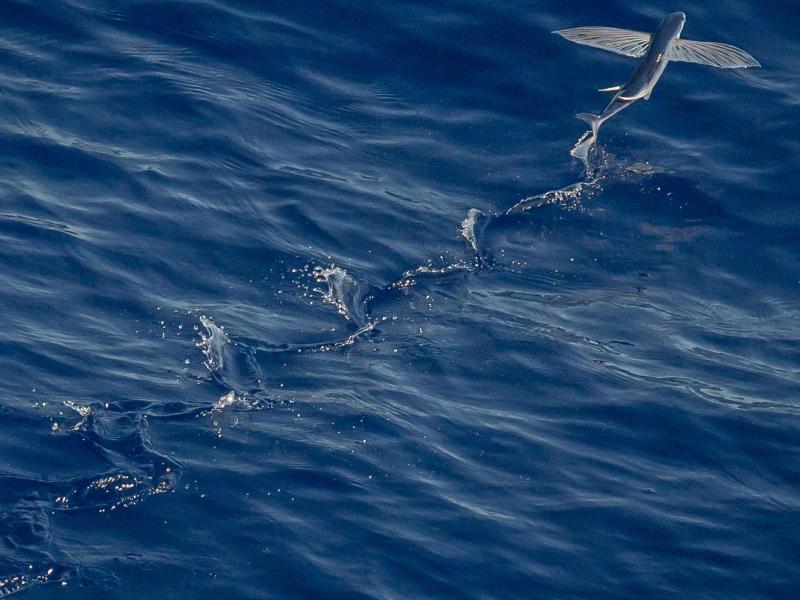 Aut eos12 Sep12 Sep19 Dec19 Dec...
Aut eos12 Sep12 Sep19 Dec19 Dec...Fugiat iure autem ratione fuga sint recusandae omnis iure nam
En savoir plus -
 Non numquam10 Nov10 Nov...
Non numquam10 Nov10 Nov...Exercitationem totam sint exercitationem delectus praesentium repellendus architecto minima esse
En savoir plus -
 Aut quis03 Dec03 Dec...
Aut quis03 Dec03 Dec...Dolorem dolorem et eum est quia laboriosam et similique qui Dolorem dolorem et eum est quia laboriosam et similique qui Dolorem dolorem et eum est quia laboriosam et similique qui Dolorem dolorem et eum est quia laboriosam et similique qui Dolorem dolorem et eum est quia laboriosam et similique qui Dolorem dolorem et eum est quia laboriosam et similique qui Dolorem dolorem et eum est quia laboriosam et similique qui Dolorem dolorem et eum est quia laboriosam et similique qui Dolorem dolorem et eum est quia laboriosam et similique qui Dolorem dolorem et eum est quia laboriosam et similique qui
En savoir plus Aut quis03 Dec03 Dec...
Aut quis03 Dec03 Dec...Dolorem dolorem et eum est quia laboriosam et similique qui Dolorem dolorem et eum est quia laboriosam et similique qui Dolorem dolorem et eum est quia laboriosam et similique qui Dolorem dolorem et eum est quia laboriosam et similique qui Dolorem dolorem et eum est quia laboriosam et similique qui Dolorem dolorem et eum est quia laboriosam et similique qui Dolorem dolorem et eum est quia laboriosam et similique qui Dolorem dolorem et eum est quia laboriosam et similique qui Dolorem dolorem et eum est quia laboriosam et similique qui Dolorem dolorem et eum est quia laboriosam et similique qui
-
 Fugit eius10 Mar11 Mar...
Fugit eius10 Mar11 Mar...Rem accusamus vel voluptate cum ut aut rerum accusantium aliquam
En savoir plus
CONFIG -4 LOREM
-
 Deleniti eos11 Mar11 Mar29 Mar29 Mar...
Deleniti eos11 Mar11 Mar29 Mar29 Mar...Officiis nam aliquam nihil temporibus sed totam dignissimos unde alias
Ceci est un texte gras
Ceci est un texte italique
Ceci est un texte avec des sup et sub
Ceci est une citation
Ceci est
- un
- texte
- avec
- bullet
- avec
- texte
Ceci est
- un
- texte
- avec
- liste
- numérotée
- liste
- avec
- texte
En savoir plus - un
-
 Dolorem nemo17 Sep17 Sep...
Dolorem nemo17 Sep17 Sep...Excepturi hic est quis cumque non inventore voluptatem explicabo et
En savoir plus -
 Voluptatem et24 Sep24 Sep...
Voluptatem et24 Sep24 Sep...Enim maiores et quis dolorem est ipsam est consequatur voluptas
En savoir plus
AUTO 10
sous titre auto 10

Molestiae ullam cumque delectus aperiam eum quo sapiente enim incidunt

Molestiae ullam cumque delectus aperiam eum quo sapiente enim incidunt

Labore et quia amet et iste omnis eius velit id
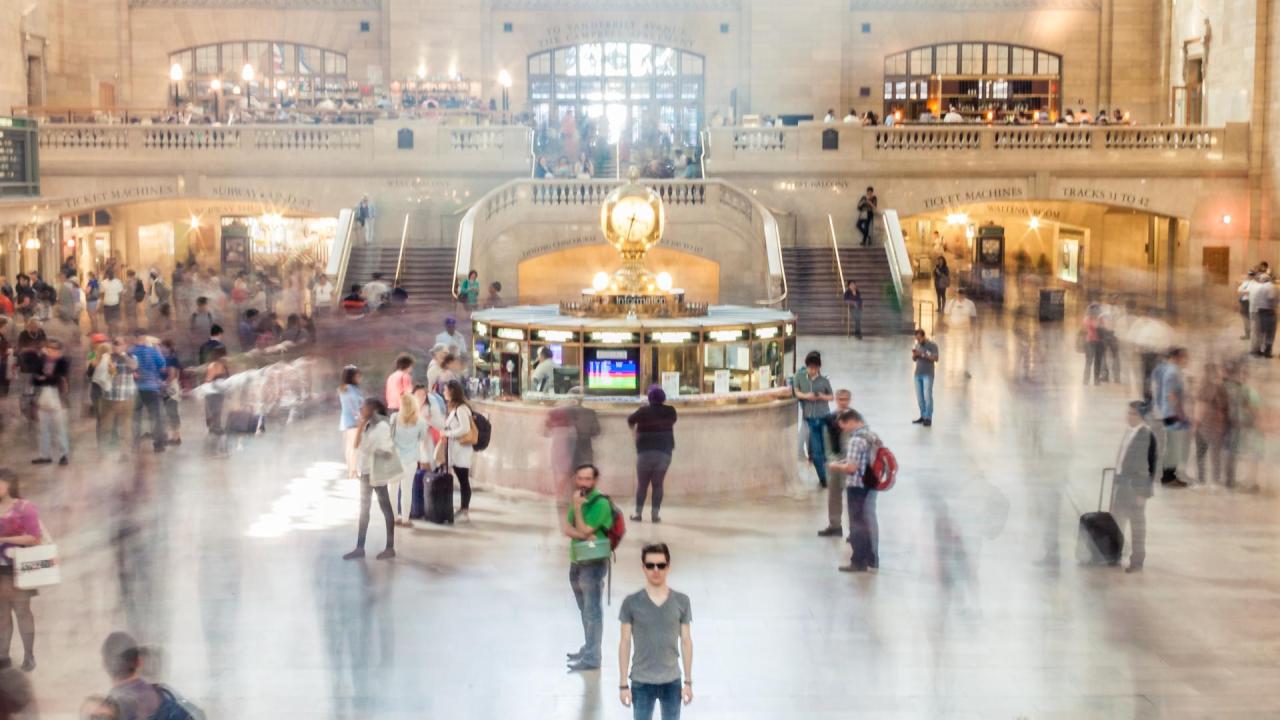
Sit eveniet sit nam vero qui iure aliquam sed voluptatem

Fugiat natus unde perspiciatis doloremque voluptatem maxime eos atque eius

Fugiat natus unde perspiciatis doloremque voluptatem maxime eos atque eius

Et repellendus repudiandae quis nemo vero magnam eveniet magni dolore

Et repellendus repudiandae quis nemo vero magnam eveniet magni dolore

Repellendus tempore accusantium ex eius mollitia ipsa ipsam exercitationem fugiat

Repellendus tempore accusantium ex eius mollitia ipsa ipsam exercitationem fugiat

Aut qui voluptates sed sapiente voluptate quia quaerat sint et

Aut qui voluptates sed sapiente voluptate quia quaerat sint et

Sed quasi sequi rem rem ratione et nobis voluptates velit

Similique adipisci natus incidunt dolorem voluptatem temporibus vitae laudantium iusto

Similique adipisci natus incidunt dolorem voluptatem temporibus vitae laudantium iusto

Inventore est dolorem occaecati mollitia aut quam porro animi nobis

Inventore est dolorem occaecati mollitia aut quam porro animi nobis
AUTO -4

Molestiae ullam cumque delectus aperiam eum quo sapiente enim incidunt

Molestiae ullam cumque delectus aperiam eum quo sapiente enim incidunt

Labore et quia amet et iste omnis eius velit id

Sit eveniet sit nam vero qui iure aliquam sed voluptatem
MANUEL 10
sous titre Manuel 10
-
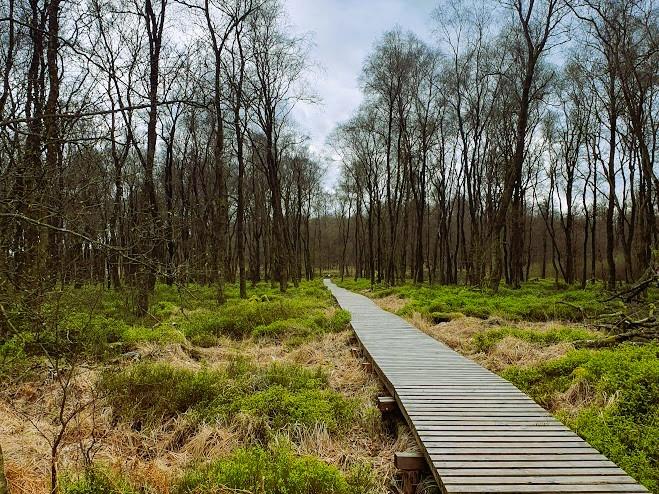 Biomass for the Energy Transition: Resources, Final Uses and Beyond - Seeing the Forest for the Trees by Martin COLLA17 Jun17 Jun...
Biomass for the Energy Transition: Resources, Final Uses and Beyond - Seeing the Forest for the Trees by Martin COLLA17 Jun17 Jun...In the context of the energy transition, biomass represents a pivotal player for a sustainable future. This thesis delves into the multifaceted role of biomass, exploring its potential, its final uses and the challenges it faces in shaping a sustainable energy landscape. The work acknowledges the complexity surrounding biomass for energy and aims to provide a nuanced and comprehensive discussion to understand its place in the transition.
The thesis first evaluates the potential of biomass for the energy transition on both national and continental scales, emphasizing the interdisciplinary nature of estimating biomass potential. The study reveals the substantial potential contribution of biomass to energy needs, particularly from forestry products and agricultural residues. It also highlights the associated political challenges regarding resource management and land use. Additionally, it investigates the potential of energy crops, focusing on lignocellulosic crops on marginal lands, and discusses the ethical considerations of utilizing such areas. Furthermore, the thesis analyses the Energy Return On Investment (EROI) of forestry products, emphasizing their significance in the energy landscape. Afterwards, the optimal use of biomass in the energy system is discussed with the whole energy system model EnergyScope. The importance of biomass for the production of high-temperature heat and non-energy demand is highlighted. Finally, the thesis broadens its focus to highlight the potential role of biomass as a catalyst for
 transformative thinking, urging a reevaluation of concepts surrounding nature and energy. It argues for a more pluralistic and politicised understanding of these concepts, positioning biomass as a key vehicle for initiating such critical reflections and transcending dualistic perspectives.
transformative thinking, urging a reevaluation of concepts surrounding nature and energy. It argues for a more pluralistic and politicised understanding of these concepts, positioning biomass as a key vehicle for initiating such critical reflections and transcending dualistic perspectives.Jury members :
- Prof. Julien Blondeau (VUB, Belgium), supervisor
- Prof. Hervé Jeanmart (UCLouvain, Belgium), supervisor
- Prof. Aude Simar (UCLouvain, Belgium), chairperson
- Prof. Svend Bram (VUB, Belgium)
- Prof. Dimitrios Aggelis (VUB, Belgium)
- Dr. Guillaume Boissonnet (CEA, France)
- Dr. Giuseppe Cardellini (VITO, Belgium)
- Dr. Daniele Costa (VITO, Belgium)
- Dr. Yves Ryckmans (Engie, Belgium)
En savoir plus Biomass for the Energy Transition: Resources, Final Uses and Beyond - Seeing the Forest for the Trees by Martin COLLA17 Jun17 Jun...
Biomass for the Energy Transition: Resources, Final Uses and Beyond - Seeing the Forest for the Trees by Martin COLLA17 Jun17 Jun...In the context of the energy transition, biomass represents a pivotal player for a sustainable future. This thesis delves into the multifaceted role of biomass, exploring its potential, its final uses and the challenges it faces in shaping a sustainable energy landscape. The work acknowledges the complexity surrounding biomass for energy and aims to provide a nuanced and comprehensive discussion to understand its place in the transition.
The thesis first evaluates the potential of biomass for the energy transition on both national and continental scales, emphasizing the interdisciplinary nature of estimating biomass potential. The study reveals the substantial potential contribution of biomass to energy needs, particularly from forestry products and agricultural residues. It also highlights the associated political challenges regarding resource management and land use. Additionally, it investigates the potential of energy crops, focusing on lignocellulosic crops on marginal lands, and discusses the ethical considerations of utilizing such areas. Furthermore, the thesis analyses the Energy Return On Investment (EROI) of forestry products, emphasizing their significance in the energy landscape. Afterwards, the optimal use of biomass in the energy system is discussed with the whole energy system model EnergyScope. The importance of biomass for the production of high-temperature heat and non-energy demand is highlighted. Finally, the thesis broadens its focus to highlight the potential role of biomass as a catalyst for
 transformative thinking, urging a reevaluation of concepts surrounding nature and energy. It argues for a more pluralistic and politicised understanding of these concepts, positioning biomass as a key vehicle for initiating such critical reflections and transcending dualistic perspectives.
transformative thinking, urging a reevaluation of concepts surrounding nature and energy. It argues for a more pluralistic and politicised understanding of these concepts, positioning biomass as a key vehicle for initiating such critical reflections and transcending dualistic perspectives.Jury members :
- Prof. Julien Blondeau (VUB, Belgium), supervisor
- Prof. Hervé Jeanmart (UCLouvain, Belgium), supervisor
- Prof. Aude Simar (UCLouvain, Belgium), chairperson
- Prof. Svend Bram (VUB, Belgium)
- Prof. Dimitrios Aggelis (VUB, Belgium)
- Dr. Guillaume Boissonnet (CEA, France)
- Dr. Giuseppe Cardellini (VITO, Belgium)
- Dr. Daniele Costa (VITO, Belgium)
- Dr. Yves Ryckmans (Engie, Belgium)
-
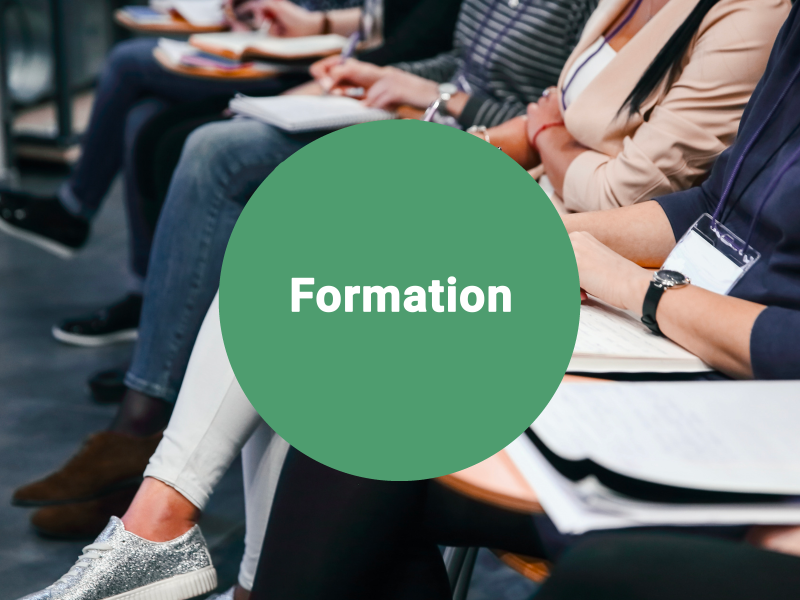 La communication interpersonnelle03 Oct03 Oct...
La communication interpersonnelle03 Oct03 Oct...La relation promoteur·trice-doctorant·e est essentielle au bon déroulement de votre thèse (Rope, 2016). Nous vous proposons une formation en début d’année pour aborder plusieurs questions :
- Comment partager ses demandes et attentes avec son promoteur ?
- Comment s’affirmer comme chercheur·se dans une relation de promotion et de dépendance relative ?
- Comment exprimer des désaccords et trouver des solutions constructives ?
- Comment être assertif·ve dans un cadre académique hiérarchisé ?
Cet atelier, organisé par un spécialiste de la communication interpersonnelle, alternera apports théoriques, exemples et mises en situation.
En savoir plus La communication interpersonnelle03 Oct03 Oct...
La communication interpersonnelle03 Oct03 Oct...La relation promoteur·trice-doctorant·e est essentielle au bon déroulement de votre thèse (Rope, 2016). Nous vous proposons une formation en début d’année pour aborder plusieurs questions :
- Comment partager ses demandes et attentes avec son promoteur ?
- Comment s’affirmer comme chercheur·se dans une relation de promotion et de dépendance relative ?
- Comment exprimer des désaccords et trouver des solutions constructives ?
- Comment être assertif·ve dans un cadre académique hiérarchisé ?
Cet atelier, organisé par un spécialiste de la communication interpersonnelle, alternera apports théoriques, exemples et mises en situation.
-
 Deux équipes INEO récompensées à Agreen Startup Libramont06 Dec02 Jan...
Deux équipes INEO récompensées à Agreen Startup Libramont06 Dec02 Jan...Agreen Startup, c’est le concours qui récompense des startups et projets innovants dans les secteurs agricole, végétal et agroalimentaire.
La 2ème édition du concours Agreen Startup s'est tenue en prélude de la Foire de Libramont les 25 et 26 juillet 2024.
Deux projets mémoires INEO ont été récompensés :
Le 1er Prix pour Lainovation, porté par Félix Charlier (AGRO), Julien Lebecq (EPL) et Gabriela François (PSP) : un processus pour laver et valoriser la laine de mouton via la fermentation en soutenant les éleveurs.
Le 3éme Prix pour Helios, porté par Basile Belchior (LSM), Corentin Degand (LSM) et Mathias Petini (EPL) : un système de refroidissement des panneaux solaires qui permet d’améliorer le rendement.En savoir plus Deux équipes INEO récompensées à Agreen Startup Libramont06 Dec02 Jan...
Deux équipes INEO récompensées à Agreen Startup Libramont06 Dec02 Jan...Agreen Startup, c’est le concours qui récompense des startups et projets innovants dans les secteurs agricole, végétal et agroalimentaire.
La 2ème édition du concours Agreen Startup s'est tenue en prélude de la Foire de Libramont les 25 et 26 juillet 2024.
Deux projets mémoires INEO ont été récompensés :
Le 1er Prix pour Lainovation, porté par Félix Charlier (AGRO), Julien Lebecq (EPL) et Gabriela François (PSP) : un processus pour laver et valoriser la laine de mouton via la fermentation en soutenant les éleveurs.
Le 3éme Prix pour Helios, porté par Basile Belchior (LSM), Corentin Degand (LSM) et Mathias Petini (EPL) : un système de refroidissement des panneaux solaires qui permet d’améliorer le rendement. -
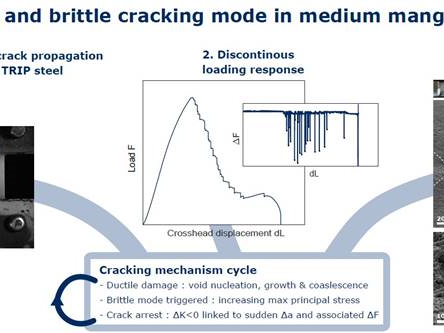 "Alternating ductile and brittle cracking mode in 3rd generation steels : Is it detrimental to toughness ?" by Thibaut HEREMANS24 May24 May...
"Alternating ductile and brittle cracking mode in 3rd generation steels : Is it detrimental to toughness ?" by Thibaut HEREMANS24 May24 May...The last decades have shown impressive progress regarding the strength and ductility compromise of steels. Yet, the resulting refined and complex microstructures lead to fracture mechanisms which are not captured by traditional forming and failure
 indicators. In this seminar, i will explore an unusual alternating ductile and brittle failure mechanism and shine the light on the underlying microstructural and micro-mechanical parameters governing it.
indicators. In this seminar, i will explore an unusual alternating ductile and brittle failure mechanism and shine the light on the underlying microstructural and micro-mechanical parameters governing it.As a bonus, I will present to you some ready-to-use hardware and software methodologies I developed during my PhD journey to make my work easier. It intends to give you ideas on how to bring your own work to the next level. This will include DIC crack monitoring (attached illustration), image treatment and more. Work smarter, not harder!
En savoir plus "Alternating ductile and brittle cracking mode in 3rd generation steels : Is it detrimental to toughness ?" by Thibaut HEREMANS24 May24 May...
"Alternating ductile and brittle cracking mode in 3rd generation steels : Is it detrimental to toughness ?" by Thibaut HEREMANS24 May24 May...The last decades have shown impressive progress regarding the strength and ductility compromise of steels. Yet, the resulting refined and complex microstructures lead to fracture mechanisms which are not captured by traditional forming and failure
 indicators. In this seminar, i will explore an unusual alternating ductile and brittle failure mechanism and shine the light on the underlying microstructural and micro-mechanical parameters governing it.
indicators. In this seminar, i will explore an unusual alternating ductile and brittle failure mechanism and shine the light on the underlying microstructural and micro-mechanical parameters governing it.As a bonus, I will present to you some ready-to-use hardware and software methodologies I developed during my PhD journey to make my work easier. It intends to give you ideas on how to bring your own work to the next level. This will include DIC crack monitoring (attached illustration), image treatment and more. Work smarter, not harder!
-
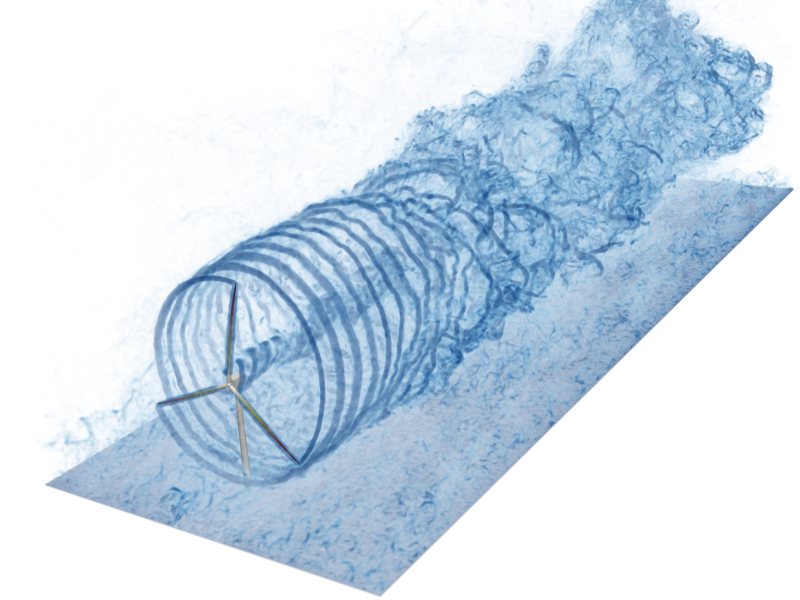 Scale-resolved aero-servo-elastic simulation of large wind turbines using the actuator line method by François TRIGAUX01 Jul01 Jul...
Scale-resolved aero-servo-elastic simulation of large wind turbines using the actuator line method by François TRIGAUX01 Jul01 Jul...In recent years, the size of offshore wind turbines has grown significantly. While this increases the power that can be harnessed from the wind, it also increases the flexibility of the blades, which can lead to aero-elastic effects. In this thesis, the aero-elastic effects occurring on large modern wind turbines are investigated using numerical simulations. For this purpose, a coupling between a flow solver and a structural solver is developed. The flow solver is a massively parallel code that performs large eddy simulations, and is used to model the turbulent wind and the wake. The structural solver is a non-linear beam solver that provides the structural deformations of the blades. The two solvers are coupled using the actuator line method, which computes the aerodynamic forces and models their effect on the flow. This coupling is then used to evaluate the effect of the turbine upscaling, as well as the impact of the blade flexibility on the loads and wake of large wind turbines. Finally, strategies to reduce the loads and increase the turbine lifetime are
 evaluated, and flexibility is shown to play an important role when evaluating the loads.
evaluated, and flexibility is shown to play an important role when evaluating the loads.Jury members :
- Prof. Grégoire Winckelmans (UCLouvain, Belgium), supervisor
- Prof. Philippe Chatelain (UCLouvain, Belgium), supervisor
- Prof. Paul Fisette (UCLouvain, Belgium), chairperson
- Prof. Joris Degroote (UGent, Belgium)
- Prof. Laurent Bricteux (UMons, Belgium)
- Prof. Hadrien Rattez (UCLouvain, Belgium)
- Dr. Georg Pirrung (DTU, Denmark)
En savoir plus Scale-resolved aero-servo-elastic simulation of large wind turbines using the actuator line method by François TRIGAUX01 Jul01 Jul...
Scale-resolved aero-servo-elastic simulation of large wind turbines using the actuator line method by François TRIGAUX01 Jul01 Jul...In recent years, the size of offshore wind turbines has grown significantly. While this increases the power that can be harnessed from the wind, it also increases the flexibility of the blades, which can lead to aero-elastic effects. In this thesis, the aero-elastic effects occurring on large modern wind turbines are investigated using numerical simulations. For this purpose, a coupling between a flow solver and a structural solver is developed. The flow solver is a massively parallel code that performs large eddy simulations, and is used to model the turbulent wind and the wake. The structural solver is a non-linear beam solver that provides the structural deformations of the blades. The two solvers are coupled using the actuator line method, which computes the aerodynamic forces and models their effect on the flow. This coupling is then used to evaluate the effect of the turbine upscaling, as well as the impact of the blade flexibility on the loads and wake of large wind turbines. Finally, strategies to reduce the loads and increase the turbine lifetime are
 evaluated, and flexibility is shown to play an important role when evaluating the loads.
evaluated, and flexibility is shown to play an important role when evaluating the loads.Jury members :
- Prof. Grégoire Winckelmans (UCLouvain, Belgium), supervisor
- Prof. Philippe Chatelain (UCLouvain, Belgium), supervisor
- Prof. Paul Fisette (UCLouvain, Belgium), chairperson
- Prof. Joris Degroote (UGent, Belgium)
- Prof. Laurent Bricteux (UMons, Belgium)
- Prof. Hadrien Rattez (UCLouvain, Belgium)
- Dr. Georg Pirrung (DTU, Denmark)
-
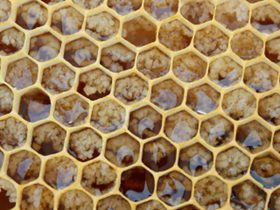 Multi-material lattices: are they worth the effort?11 Jun11 Jun...
Multi-material lattices: are they worth the effort?11 Jun11 Jun...Lattices materials range from open and closed cell foams across a wide range of length scale to micro-architectured, multi-phase solids that are manufactured by additive manufacture. Size effects are important too: lattices with struts of small diameter are subjected to high gradients of strain in bending and are consequently have a higher material strength than large scale lattices. The focus of this talk is on the effect of filling of a 2D hexagonal lattice or a 3D Kelvin lattice upon their macroscopic stress versus strain responses. To first order, the presence of an incompressible in-fill reduces the degrees of freedom by which the lattice can deform. Consequently, the deformation mode of the lattice can switch from bending-dominated to stretching dominated with a large concomitant elevation to stiffness and strength. Instabilities
 can develop, and cavitation plays a major role.
can develop, and cavitation plays a major role.Norman Fleck is Professor of Mechanics of Materials (since 1997), and Director of the Cambridge Centre for Micromechanics (1990) at Cambridge University Engineering Department. He was Head of the Mechanics, Materials and Design Division of the Cambridge University Engineering Department 1996-2008. He conducted a PhD in metal fatigue at Cambridge University (1980-1984), followed by post-doctoral research at Cambridge University and at Harvard University, USA with John Hutchinson and Bernard Budiansky. He is a leader in the experimental and theoretical mechanics of engineering materials. He has been elected to several learned Societies (Fellow of the London Royal Society, Fellow of the Royal Academy of Engineering, US National Academy of Engineering, European Mechanics Society, Academia Europea and the European Academy of Sciences). He is the currently President of IUTAM.
Speaker: Norman A. Fleck, Cambridge University, UK
En savoir plus Multi-material lattices: are they worth the effort?11 Jun11 Jun...
Multi-material lattices: are they worth the effort?11 Jun11 Jun...Lattices materials range from open and closed cell foams across a wide range of length scale to micro-architectured, multi-phase solids that are manufactured by additive manufacture. Size effects are important too: lattices with struts of small diameter are subjected to high gradients of strain in bending and are consequently have a higher material strength than large scale lattices. The focus of this talk is on the effect of filling of a 2D hexagonal lattice or a 3D Kelvin lattice upon their macroscopic stress versus strain responses. To first order, the presence of an incompressible in-fill reduces the degrees of freedom by which the lattice can deform. Consequently, the deformation mode of the lattice can switch from bending-dominated to stretching dominated with a large concomitant elevation to stiffness and strength. Instabilities
 can develop, and cavitation plays a major role.
can develop, and cavitation plays a major role.Norman Fleck is Professor of Mechanics of Materials (since 1997), and Director of the Cambridge Centre for Micromechanics (1990) at Cambridge University Engineering Department. He was Head of the Mechanics, Materials and Design Division of the Cambridge University Engineering Department 1996-2008. He conducted a PhD in metal fatigue at Cambridge University (1980-1984), followed by post-doctoral research at Cambridge University and at Harvard University, USA with John Hutchinson and Bernard Budiansky. He is a leader in the experimental and theoretical mechanics of engineering materials. He has been elected to several learned Societies (Fellow of the London Royal Society, Fellow of the Royal Academy of Engineering, US National Academy of Engineering, European Mechanics Society, Academia Europea and the European Academy of Sciences). He is the currently President of IUTAM.
Speaker: Norman A. Fleck, Cambridge University, UK
-
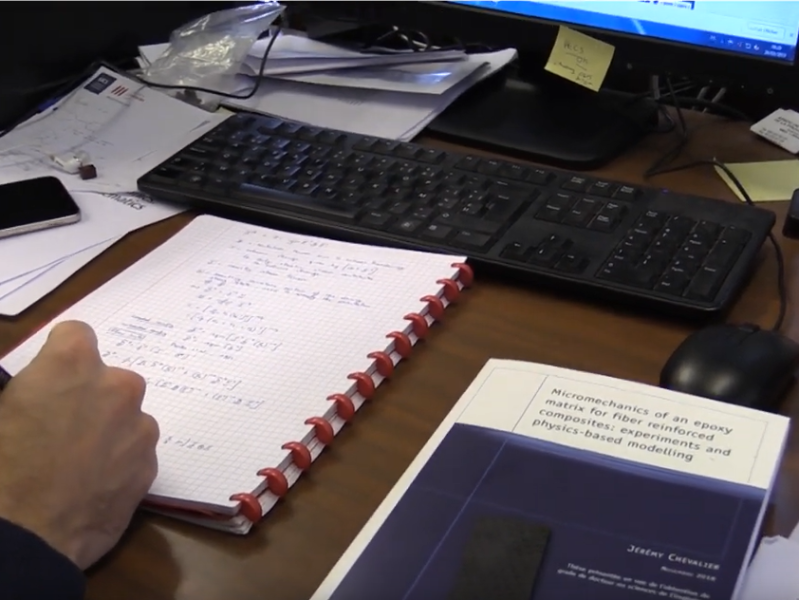 Understanding hydrogen desorption mechanisms in aluminized PHS by Mohamed KRID12 Jun12 Jun...
Understanding hydrogen desorption mechanisms in aluminized PHS by Mohamed KRID12 Jun12 Jun...Press hardenable steels (PHS) coated with Al-Si alloy are widely used in the automotive industry owing to their good mechanical properties (YS > 1200 MPa and TS > 1500 MPa). The presence of Al-Si coating prevents oxidation and decarburization of steel during austenitization. It has been found that aluminized PHS are more sensitive to hydrogen absorption during austenitization in comparison to uncoated PHS. After quenching, Al-Si coating indeed acts as a hydrogen-diffusion barrier at room temperature and the diffusible hydrogen present in aluminized PHS can lead to hydrogen embrittlement (HE).
In this context, this thesis aims at investigate the mechanisms that govern the rate of hydrogen absorption and desorption in coated PHS. Thermal Desorption Analysis (TDA) is the main characterization technique used throughout this thesis. Besides, austenitization of
 coated samples was carried out in controlled atmosphere containing D2O instead of H2O to avoid any atmospheric contamination which could compromise further accurate quantification.
coated samples was carried out in controlled atmosphere containing D2O instead of H2O to avoid any atmospheric contamination which could compromise further accurate quantification.In order to assess hydrogen trapping sites in aluminized PHS, mechanical removal of the coating from the steel substrate was performed. This highlighted that hydrogen in aluminized PHS is reversibly trapped in the dislocation strain fields in the steel substrate. Additionally, the origin of multiple peaks in D2 desorption profiles of aluminized steels are attributed to different D diffusion paths. The first peak is related to desorption of D from cut bare edges, while high temperature peaks are related to desorption of D through coated faces of aluminized PHS. Finally, a 2D finite element method (FEM) model was proposed to simulate desorption profiles of aluminized 22MnB5 steels and provide a better insight into the effect of the coating on D desorption.
Jury members :
- Prof. Pascal Jacques(UCLouvain, Belgium), supervisor
- Prof. Sandra Soares-Frazao (UCLouvain, Belgium), chairperson
- Prof. Thomas Pardoen (UCLouvain, Belgium)
- Prof. Thierry Sturel (Arcelor Mittal Maizière research)
- Prof. Xavier Vanden Eynde (CRM group)
- Prof. Tom Depever (UGent, Belgium)
En savoir plus Understanding hydrogen desorption mechanisms in aluminized PHS by Mohamed KRID12 Jun12 Jun...
Understanding hydrogen desorption mechanisms in aluminized PHS by Mohamed KRID12 Jun12 Jun...Press hardenable steels (PHS) coated with Al-Si alloy are widely used in the automotive industry owing to their good mechanical properties (YS > 1200 MPa and TS > 1500 MPa). The presence of Al-Si coating prevents oxidation and decarburization of steel during austenitization. It has been found that aluminized PHS are more sensitive to hydrogen absorption during austenitization in comparison to uncoated PHS. After quenching, Al-Si coating indeed acts as a hydrogen-diffusion barrier at room temperature and the diffusible hydrogen present in aluminized PHS can lead to hydrogen embrittlement (HE).
In this context, this thesis aims at investigate the mechanisms that govern the rate of hydrogen absorption and desorption in coated PHS. Thermal Desorption Analysis (TDA) is the main characterization technique used throughout this thesis. Besides, austenitization of
 coated samples was carried out in controlled atmosphere containing D2O instead of H2O to avoid any atmospheric contamination which could compromise further accurate quantification.
coated samples was carried out in controlled atmosphere containing D2O instead of H2O to avoid any atmospheric contamination which could compromise further accurate quantification.In order to assess hydrogen trapping sites in aluminized PHS, mechanical removal of the coating from the steel substrate was performed. This highlighted that hydrogen in aluminized PHS is reversibly trapped in the dislocation strain fields in the steel substrate. Additionally, the origin of multiple peaks in D2 desorption profiles of aluminized steels are attributed to different D diffusion paths. The first peak is related to desorption of D from cut bare edges, while high temperature peaks are related to desorption of D through coated faces of aluminized PHS. Finally, a 2D finite element method (FEM) model was proposed to simulate desorption profiles of aluminized 22MnB5 steels and provide a better insight into the effect of the coating on D desorption.
Jury members :
- Prof. Pascal Jacques(UCLouvain, Belgium), supervisor
- Prof. Sandra Soares-Frazao (UCLouvain, Belgium), chairperson
- Prof. Thomas Pardoen (UCLouvain, Belgium)
- Prof. Thierry Sturel (Arcelor Mittal Maizière research)
- Prof. Xavier Vanden Eynde (CRM group)
- Prof. Tom Depever (UGent, Belgium)
-
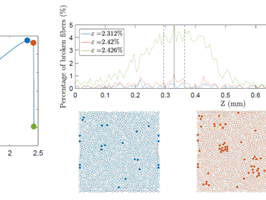 Design of composite materials and structures across the scales: physical and data-driven models28 Jun28 Jun...
Design of composite materials and structures across the scales: physical and data-driven models28 Jun28 Jun...The ambitious goal of reaching net-zero emissions in aviation by 2050 can only be met by science-based disruptive innovations, including those that have the potential to reduce aircraft structural weight. Based on the hypothesis that composite materials and structures are currently not used to their full potential, a new approach for the inverse design of composite materials and structures across different spatial scales will be presented. The main building blocks of the proposed approach, linking the macrostructure
 of a composite structure to the microstructure of a composite material, will be discussed.
of a composite structure to the microstructure of a composite material, will be discussed.Speaker : Prof. Pedro CAMANHO, University of Porto, Portugal
En savoir plus Design of composite materials and structures across the scales: physical and data-driven models28 Jun28 Jun...
Design of composite materials and structures across the scales: physical and data-driven models28 Jun28 Jun...The ambitious goal of reaching net-zero emissions in aviation by 2050 can only be met by science-based disruptive innovations, including those that have the potential to reduce aircraft structural weight. Based on the hypothesis that composite materials and structures are currently not used to their full potential, a new approach for the inverse design of composite materials and structures across different spatial scales will be presented. The main building blocks of the proposed approach, linking the macrostructure
 of a composite structure to the microstructure of a composite material, will be discussed.
of a composite structure to the microstructure of a composite material, will be discussed.Speaker : Prof. Pedro CAMANHO, University of Porto, Portugal
-
 Multi-scale time integration schemes for three-dimensional hydrodynamic marine models by Ange Pacifique ISHIMWE05 Jul05 Jul...
Multi-scale time integration schemes for three-dimensional hydrodynamic marine models by Ange Pacifique ISHIMWE05 Jul05 Jul...The coastal ocean, covering a mere 8% of Earth's surface and 0.2% of the global ocean volume, plays a pivotal role in human activities and is thus crucial for study. These domains have to deal with large aspect ratio domains where the horizontal length scales can reach several thousands of kilometers while the depth is generally of the order of one kilometer or smaller. For this reason, numerical models of marine hydrodynamics must address a wide range of temporal and spatial scales. To achieve both efficiency and numerical stability, careful selection of time-stepping schemes is necessary. One common approach is to separate fast and slow dynamics into distinct modes, with fast waves modeled using a two-dimensional system through depth averaging, while slower motions are treated in three dimensions.
The objective of this thesis is to implement a second-order split-time scheme for hydrodynamic equations to address this complex configuration. One of the main goal is to take into account the different computaion cost of each terms, thereby enhancing simulation efficiency. Another goal is to reduce numerical diffusion, making second-order methods preferable. To achieve this, a new split-explicit Runge-Kutta scheme is developed and adapted for the Discontinuous-Galerkin Finite Element method to establish a second-order time-stepping approach for more precise results. This method integrates a three-stage low-storage Runge-Kutta scheme for slow processes and a two-stage low-storage scheme for faster processes. However, while functional in theoretical
 scenarios, limitations arise from vertical dynamics, such as turbulent diffusivity or viscosity. To address this, an implicit component is incorporated into the temporal scheme. Both models undergo successful testing across various scenarios, demonstrating their order of convergence, ability to reduce numerical diffusion, and overall accuracy.
scenarios, limitations arise from vertical dynamics, such as turbulent diffusivity or viscosity. To address this, an implicit component is incorporated into the temporal scheme. Both models undergo successful testing across various scenarios, demonstrating their order of convergence, ability to reduce numerical diffusion, and overall accuracy.Jury members :
- Prof. Eric Deleersnijder (UCLouvain, Belgium), supervisor
- Prof. Vincent Legat (UCLouvain, Belgium), supervisor
- Prof. Paul Fisette (UCLouvain, Belgium), chairperson
- Prof. Emmanuel Hanert (UCLouvain, Belgium)
- Dr. Jonathan Lambrechts (UCLouvain, Belgium)
- Prof. Jochen Schuetz (UHasselt, Belgium)
- Prof. Jean-Marie Beckers (ULiège, Belgium)
En savoir plus Multi-scale time integration schemes for three-dimensional hydrodynamic marine models by Ange Pacifique ISHIMWE05 Jul05 Jul...
Multi-scale time integration schemes for three-dimensional hydrodynamic marine models by Ange Pacifique ISHIMWE05 Jul05 Jul...The coastal ocean, covering a mere 8% of Earth's surface and 0.2% of the global ocean volume, plays a pivotal role in human activities and is thus crucial for study. These domains have to deal with large aspect ratio domains where the horizontal length scales can reach several thousands of kilometers while the depth is generally of the order of one kilometer or smaller. For this reason, numerical models of marine hydrodynamics must address a wide range of temporal and spatial scales. To achieve both efficiency and numerical stability, careful selection of time-stepping schemes is necessary. One common approach is to separate fast and slow dynamics into distinct modes, with fast waves modeled using a two-dimensional system through depth averaging, while slower motions are treated in three dimensions.
The objective of this thesis is to implement a second-order split-time scheme for hydrodynamic equations to address this complex configuration. One of the main goal is to take into account the different computaion cost of each terms, thereby enhancing simulation efficiency. Another goal is to reduce numerical diffusion, making second-order methods preferable. To achieve this, a new split-explicit Runge-Kutta scheme is developed and adapted for the Discontinuous-Galerkin Finite Element method to establish a second-order time-stepping approach for more precise results. This method integrates a three-stage low-storage Runge-Kutta scheme for slow processes and a two-stage low-storage scheme for faster processes. However, while functional in theoretical
 scenarios, limitations arise from vertical dynamics, such as turbulent diffusivity or viscosity. To address this, an implicit component is incorporated into the temporal scheme. Both models undergo successful testing across various scenarios, demonstrating their order of convergence, ability to reduce numerical diffusion, and overall accuracy.
scenarios, limitations arise from vertical dynamics, such as turbulent diffusivity or viscosity. To address this, an implicit component is incorporated into the temporal scheme. Both models undergo successful testing across various scenarios, demonstrating their order of convergence, ability to reduce numerical diffusion, and overall accuracy.Jury members :
- Prof. Eric Deleersnijder (UCLouvain, Belgium), supervisor
- Prof. Vincent Legat (UCLouvain, Belgium), supervisor
- Prof. Paul Fisette (UCLouvain, Belgium), chairperson
- Prof. Emmanuel Hanert (UCLouvain, Belgium)
- Dr. Jonathan Lambrechts (UCLouvain, Belgium)
- Prof. Jochen Schuetz (UHasselt, Belgium)
- Prof. Jean-Marie Beckers (ULiège, Belgium)
-
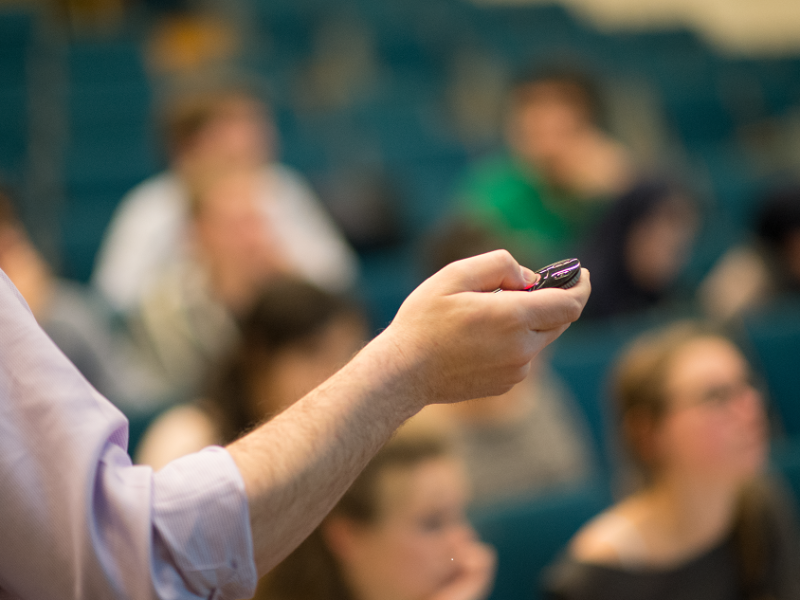 Accelerating Microfluidic Heat Sink Design: A POD-ROM Approach to Topology Optimization by Dr Athanasios Boutsikakis (Corintis SA)06 Jun06 Jun...
Accelerating Microfluidic Heat Sink Design: A POD-ROM Approach to Topology Optimization by Dr Athanasios Boutsikakis (Corintis SA)06 Jun06 Jun...This talk focuses on accelerating the design of microfluidic heat sinks via topology optimization of the conjugate heat transfer problem. The computational bottleneck of this iterative process is the numerical solution of the Navier-Stokes (NS) equations due to their nonlinearity. The approach presented in this talk leverages the Proper Orthogonal Decomposition (POD) method to develop a Reduced Order Model (ROM) for the NS equations including a Brinkman term. The novelty of this method lies in generating POD snapshots during the topology optimization (online) by capturing solutions of the nonlinear NS equations using a Full Order Model (FOM) based on the Finite Element Method. These snapshots are then used to incrementally generate a singular vector basis, which is subsequently applied via a Galerkin projection to truncate the Taylor expansion of the NS equations within a Newton-Raphson solver. Therefore, during the iterative optimization process, the method alternates between using the FOM for snapshot generation and the creation and solution of the ROM. Using this method for problems of 1-2 million degrees of freedom results in a significant acceleration of the entire topology optimization pipeline by 5-6x. This acceleration is pronounced in the later optimization stages when the geometry evolution is subtle, while the difference between the final designs obtained by the FOM and the ROM is not significant. Thus, this approach enables faster and more efficient optimization of microfluidic heat sink designs, making it a valuable tool for engineers and researchers in the field.
En savoir plus Accelerating Microfluidic Heat Sink Design: A POD-ROM Approach to Topology Optimization by Dr Athanasios Boutsikakis (Corintis SA)06 Jun06 Jun...
Accelerating Microfluidic Heat Sink Design: A POD-ROM Approach to Topology Optimization by Dr Athanasios Boutsikakis (Corintis SA)06 Jun06 Jun...This talk focuses on accelerating the design of microfluidic heat sinks via topology optimization of the conjugate heat transfer problem. The computational bottleneck of this iterative process is the numerical solution of the Navier-Stokes (NS) equations due to their nonlinearity. The approach presented in this talk leverages the Proper Orthogonal Decomposition (POD) method to develop a Reduced Order Model (ROM) for the NS equations including a Brinkman term. The novelty of this method lies in generating POD snapshots during the topology optimization (online) by capturing solutions of the nonlinear NS equations using a Full Order Model (FOM) based on the Finite Element Method. These snapshots are then used to incrementally generate a singular vector basis, which is subsequently applied via a Galerkin projection to truncate the Taylor expansion of the NS equations within a Newton-Raphson solver. Therefore, during the iterative optimization process, the method alternates between using the FOM for snapshot generation and the creation and solution of the ROM. Using this method for problems of 1-2 million degrees of freedom results in a significant acceleration of the entire topology optimization pipeline by 5-6x. This acceleration is pronounced in the later optimization stages when the geometry evolution is subtle, while the difference between the final designs obtained by the FOM and the ROM is not significant. Thus, this approach enables faster and more efficient optimization of microfluidic heat sink designs, making it a valuable tool for engineers and researchers in the field.
MANUEL =4
-
 Biomass for the Energy Transition: Resources, Final Uses and Beyond - Seeing the Forest for the Trees by Martin COLLA17 Jun17 Jun...
Biomass for the Energy Transition: Resources, Final Uses and Beyond - Seeing the Forest for the Trees by Martin COLLA17 Jun17 Jun...In the context of the energy transition, biomass represents a pivotal player for a sustainable future. This thesis delves into the multifaceted role of biomass, exploring its potential, its final uses and the challenges it faces in shaping a sustainable energy landscape. The work acknowledges the complexity surrounding biomass for energy and aims to provide a nuanced and comprehensive discussion to understand its place in the transition.
The thesis first evaluates the potential of biomass for the energy transition on both national and continental scales, emphasizing the interdisciplinary nature of estimating biomass potential. The study reveals the substantial potential contribution of biomass to energy needs, particularly from forestry products and agricultural residues. It also highlights the associated political challenges regarding resource management and land use. Additionally, it investigates the potential of energy crops, focusing on lignocellulosic crops on marginal lands, and discusses the ethical considerations of utilizing such areas. Furthermore, the thesis analyses the Energy Return On Investment (EROI) of forestry products, emphasizing their significance in the energy landscape. Afterwards, the optimal use of biomass in the energy system is discussed with the whole energy system model EnergyScope. The importance of biomass for the production of high-temperature heat and non-energy demand is highlighted. Finally, the thesis broadens its focus to highlight the potential role of biomass as a catalyst for
 transformative thinking, urging a reevaluation of concepts surrounding nature and energy. It argues for a more pluralistic and politicised understanding of these concepts, positioning biomass as a key vehicle for initiating such critical reflections and transcending dualistic perspectives.
transformative thinking, urging a reevaluation of concepts surrounding nature and energy. It argues for a more pluralistic and politicised understanding of these concepts, positioning biomass as a key vehicle for initiating such critical reflections and transcending dualistic perspectives.Jury members :
- Prof. Julien Blondeau (VUB, Belgium), supervisor
- Prof. Hervé Jeanmart (UCLouvain, Belgium), supervisor
- Prof. Aude Simar (UCLouvain, Belgium), chairperson
- Prof. Svend Bram (VUB, Belgium)
- Prof. Dimitrios Aggelis (VUB, Belgium)
- Dr. Guillaume Boissonnet (CEA, France)
- Dr. Giuseppe Cardellini (VITO, Belgium)
- Dr. Daniele Costa (VITO, Belgium)
- Dr. Yves Ryckmans (Engie, Belgium)
En savoir plus Biomass for the Energy Transition: Resources, Final Uses and Beyond - Seeing the Forest for the Trees by Martin COLLA17 Jun17 Jun...
Biomass for the Energy Transition: Resources, Final Uses and Beyond - Seeing the Forest for the Trees by Martin COLLA17 Jun17 Jun...In the context of the energy transition, biomass represents a pivotal player for a sustainable future. This thesis delves into the multifaceted role of biomass, exploring its potential, its final uses and the challenges it faces in shaping a sustainable energy landscape. The work acknowledges the complexity surrounding biomass for energy and aims to provide a nuanced and comprehensive discussion to understand its place in the transition.
The thesis first evaluates the potential of biomass for the energy transition on both national and continental scales, emphasizing the interdisciplinary nature of estimating biomass potential. The study reveals the substantial potential contribution of biomass to energy needs, particularly from forestry products and agricultural residues. It also highlights the associated political challenges regarding resource management and land use. Additionally, it investigates the potential of energy crops, focusing on lignocellulosic crops on marginal lands, and discusses the ethical considerations of utilizing such areas. Furthermore, the thesis analyses the Energy Return On Investment (EROI) of forestry products, emphasizing their significance in the energy landscape. Afterwards, the optimal use of biomass in the energy system is discussed with the whole energy system model EnergyScope. The importance of biomass for the production of high-temperature heat and non-energy demand is highlighted. Finally, the thesis broadens its focus to highlight the potential role of biomass as a catalyst for
 transformative thinking, urging a reevaluation of concepts surrounding nature and energy. It argues for a more pluralistic and politicised understanding of these concepts, positioning biomass as a key vehicle for initiating such critical reflections and transcending dualistic perspectives.
transformative thinking, urging a reevaluation of concepts surrounding nature and energy. It argues for a more pluralistic and politicised understanding of these concepts, positioning biomass as a key vehicle for initiating such critical reflections and transcending dualistic perspectives.Jury members :
- Prof. Julien Blondeau (VUB, Belgium), supervisor
- Prof. Hervé Jeanmart (UCLouvain, Belgium), supervisor
- Prof. Aude Simar (UCLouvain, Belgium), chairperson
- Prof. Svend Bram (VUB, Belgium)
- Prof. Dimitrios Aggelis (VUB, Belgium)
- Dr. Guillaume Boissonnet (CEA, France)
- Dr. Giuseppe Cardellini (VITO, Belgium)
- Dr. Daniele Costa (VITO, Belgium)
- Dr. Yves Ryckmans (Engie, Belgium)
-
 La communication interpersonnelle03 Oct03 Oct...
La communication interpersonnelle03 Oct03 Oct...La relation promoteur·trice-doctorant·e est essentielle au bon déroulement de votre thèse (Rope, 2016). Nous vous proposons une formation en début d’année pour aborder plusieurs questions :
- Comment partager ses demandes et attentes avec son promoteur ?
- Comment s’affirmer comme chercheur·se dans une relation de promotion et de dépendance relative ?
- Comment exprimer des désaccords et trouver des solutions constructives ?
- Comment être assertif·ve dans un cadre académique hiérarchisé ?
Cet atelier, organisé par un spécialiste de la communication interpersonnelle, alternera apports théoriques, exemples et mises en situation.
En savoir plus La communication interpersonnelle03 Oct03 Oct...
La communication interpersonnelle03 Oct03 Oct...La relation promoteur·trice-doctorant·e est essentielle au bon déroulement de votre thèse (Rope, 2016). Nous vous proposons une formation en début d’année pour aborder plusieurs questions :
- Comment partager ses demandes et attentes avec son promoteur ?
- Comment s’affirmer comme chercheur·se dans une relation de promotion et de dépendance relative ?
- Comment exprimer des désaccords et trouver des solutions constructives ?
- Comment être assertif·ve dans un cadre académique hiérarchisé ?
Cet atelier, organisé par un spécialiste de la communication interpersonnelle, alternera apports théoriques, exemples et mises en situation.
-
 Deux équipes INEO récompensées à Agreen Startup Libramont06 Dec02 Jan...
Deux équipes INEO récompensées à Agreen Startup Libramont06 Dec02 Jan...Agreen Startup, c’est le concours qui récompense des startups et projets innovants dans les secteurs agricole, végétal et agroalimentaire.
La 2ème édition du concours Agreen Startup s'est tenue en prélude de la Foire de Libramont les 25 et 26 juillet 2024.
Deux projets mémoires INEO ont été récompensés :
Le 1er Prix pour Lainovation, porté par Félix Charlier (AGRO), Julien Lebecq (EPL) et Gabriela François (PSP) : un processus pour laver et valoriser la laine de mouton via la fermentation en soutenant les éleveurs.
Le 3éme Prix pour Helios, porté par Basile Belchior (LSM), Corentin Degand (LSM) et Mathias Petini (EPL) : un système de refroidissement des panneaux solaires qui permet d’améliorer le rendement.En savoir plus Deux équipes INEO récompensées à Agreen Startup Libramont06 Dec02 Jan...
Deux équipes INEO récompensées à Agreen Startup Libramont06 Dec02 Jan...Agreen Startup, c’est le concours qui récompense des startups et projets innovants dans les secteurs agricole, végétal et agroalimentaire.
La 2ème édition du concours Agreen Startup s'est tenue en prélude de la Foire de Libramont les 25 et 26 juillet 2024.
Deux projets mémoires INEO ont été récompensés :
Le 1er Prix pour Lainovation, porté par Félix Charlier (AGRO), Julien Lebecq (EPL) et Gabriela François (PSP) : un processus pour laver et valoriser la laine de mouton via la fermentation en soutenant les éleveurs.
Le 3éme Prix pour Helios, porté par Basile Belchior (LSM), Corentin Degand (LSM) et Mathias Petini (EPL) : un système de refroidissement des panneaux solaires qui permet d’améliorer le rendement. -
 "Alternating ductile and brittle cracking mode in 3rd generation steels : Is it detrimental to toughness ?" by Thibaut HEREMANS24 May24 May...
"Alternating ductile and brittle cracking mode in 3rd generation steels : Is it detrimental to toughness ?" by Thibaut HEREMANS24 May24 May...The last decades have shown impressive progress regarding the strength and ductility compromise of steels. Yet, the resulting refined and complex microstructures lead to fracture mechanisms which are not captured by traditional forming and failure
 indicators. In this seminar, i will explore an unusual alternating ductile and brittle failure mechanism and shine the light on the underlying microstructural and micro-mechanical parameters governing it.
indicators. In this seminar, i will explore an unusual alternating ductile and brittle failure mechanism and shine the light on the underlying microstructural and micro-mechanical parameters governing it.As a bonus, I will present to you some ready-to-use hardware and software methodologies I developed during my PhD journey to make my work easier. It intends to give you ideas on how to bring your own work to the next level. This will include DIC crack monitoring (attached illustration), image treatment and more. Work smarter, not harder!
En savoir plus "Alternating ductile and brittle cracking mode in 3rd generation steels : Is it detrimental to toughness ?" by Thibaut HEREMANS24 May24 May...
"Alternating ductile and brittle cracking mode in 3rd generation steels : Is it detrimental to toughness ?" by Thibaut HEREMANS24 May24 May...The last decades have shown impressive progress regarding the strength and ductility compromise of steels. Yet, the resulting refined and complex microstructures lead to fracture mechanisms which are not captured by traditional forming and failure
 indicators. In this seminar, i will explore an unusual alternating ductile and brittle failure mechanism and shine the light on the underlying microstructural and micro-mechanical parameters governing it.
indicators. In this seminar, i will explore an unusual alternating ductile and brittle failure mechanism and shine the light on the underlying microstructural and micro-mechanical parameters governing it.As a bonus, I will present to you some ready-to-use hardware and software methodologies I developed during my PhD journey to make my work easier. It intends to give you ideas on how to bring your own work to the next level. This will include DIC crack monitoring (attached illustration), image treatment and more. Work smarter, not harder!
Manuel -4
-
 Biomass for the Energy Transition: Resources, Final Uses and Beyond - Seeing the Forest for the Trees by Martin COLLA17 Jun17 Jun...
Biomass for the Energy Transition: Resources, Final Uses and Beyond - Seeing the Forest for the Trees by Martin COLLA17 Jun17 Jun...In the context of the energy transition, biomass represents a pivotal player for a sustainable future. This thesis delves into the multifaceted role of biomass, exploring its potential, its final uses and the challenges it faces in shaping a sustainable energy landscape. The work acknowledges the complexity surrounding biomass for energy and aims to provide a nuanced and comprehensive discussion to understand its place in the transition.
The thesis first evaluates the potential of biomass for the energy transition on both national and continental scales, emphasizing the interdisciplinary nature of estimating biomass potential. The study reveals the substantial potential contribution of biomass to energy needs, particularly from forestry products and agricultural residues. It also highlights the associated political challenges regarding resource management and land use. Additionally, it investigates the potential of energy crops, focusing on lignocellulosic crops on marginal lands, and discusses the ethical considerations of utilizing such areas. Furthermore, the thesis analyses the Energy Return On Investment (EROI) of forestry products, emphasizing their significance in the energy landscape. Afterwards, the optimal use of biomass in the energy system is discussed with the whole energy system model EnergyScope. The importance of biomass for the production of high-temperature heat and non-energy demand is highlighted. Finally, the thesis broadens its focus to highlight the potential role of biomass as a catalyst for
 transformative thinking, urging a reevaluation of concepts surrounding nature and energy. It argues for a more pluralistic and politicised understanding of these concepts, positioning biomass as a key vehicle for initiating such critical reflections and transcending dualistic perspectives.
transformative thinking, urging a reevaluation of concepts surrounding nature and energy. It argues for a more pluralistic and politicised understanding of these concepts, positioning biomass as a key vehicle for initiating such critical reflections and transcending dualistic perspectives.Jury members :
- Prof. Julien Blondeau (VUB, Belgium), supervisor
- Prof. Hervé Jeanmart (UCLouvain, Belgium), supervisor
- Prof. Aude Simar (UCLouvain, Belgium), chairperson
- Prof. Svend Bram (VUB, Belgium)
- Prof. Dimitrios Aggelis (VUB, Belgium)
- Dr. Guillaume Boissonnet (CEA, France)
- Dr. Giuseppe Cardellini (VITO, Belgium)
- Dr. Daniele Costa (VITO, Belgium)
- Dr. Yves Ryckmans (Engie, Belgium)
En savoir plus Biomass for the Energy Transition: Resources, Final Uses and Beyond - Seeing the Forest for the Trees by Martin COLLA17 Jun17 Jun...
Biomass for the Energy Transition: Resources, Final Uses and Beyond - Seeing the Forest for the Trees by Martin COLLA17 Jun17 Jun...In the context of the energy transition, biomass represents a pivotal player for a sustainable future. This thesis delves into the multifaceted role of biomass, exploring its potential, its final uses and the challenges it faces in shaping a sustainable energy landscape. The work acknowledges the complexity surrounding biomass for energy and aims to provide a nuanced and comprehensive discussion to understand its place in the transition.
The thesis first evaluates the potential of biomass for the energy transition on both national and continental scales, emphasizing the interdisciplinary nature of estimating biomass potential. The study reveals the substantial potential contribution of biomass to energy needs, particularly from forestry products and agricultural residues. It also highlights the associated political challenges regarding resource management and land use. Additionally, it investigates the potential of energy crops, focusing on lignocellulosic crops on marginal lands, and discusses the ethical considerations of utilizing such areas. Furthermore, the thesis analyses the Energy Return On Investment (EROI) of forestry products, emphasizing their significance in the energy landscape. Afterwards, the optimal use of biomass in the energy system is discussed with the whole energy system model EnergyScope. The importance of biomass for the production of high-temperature heat and non-energy demand is highlighted. Finally, the thesis broadens its focus to highlight the potential role of biomass as a catalyst for
 transformative thinking, urging a reevaluation of concepts surrounding nature and energy. It argues for a more pluralistic and politicised understanding of these concepts, positioning biomass as a key vehicle for initiating such critical reflections and transcending dualistic perspectives.
transformative thinking, urging a reevaluation of concepts surrounding nature and energy. It argues for a more pluralistic and politicised understanding of these concepts, positioning biomass as a key vehicle for initiating such critical reflections and transcending dualistic perspectives.Jury members :
- Prof. Julien Blondeau (VUB, Belgium), supervisor
- Prof. Hervé Jeanmart (UCLouvain, Belgium), supervisor
- Prof. Aude Simar (UCLouvain, Belgium), chairperson
- Prof. Svend Bram (VUB, Belgium)
- Prof. Dimitrios Aggelis (VUB, Belgium)
- Dr. Guillaume Boissonnet (CEA, France)
- Dr. Giuseppe Cardellini (VITO, Belgium)
- Dr. Daniele Costa (VITO, Belgium)
- Dr. Yves Ryckmans (Engie, Belgium)
-
 La communication interpersonnelle03 Oct03 Oct...
La communication interpersonnelle03 Oct03 Oct...La relation promoteur·trice-doctorant·e est essentielle au bon déroulement de votre thèse (Rope, 2016). Nous vous proposons une formation en début d’année pour aborder plusieurs questions :
- Comment partager ses demandes et attentes avec son promoteur ?
- Comment s’affirmer comme chercheur·se dans une relation de promotion et de dépendance relative ?
- Comment exprimer des désaccords et trouver des solutions constructives ?
- Comment être assertif·ve dans un cadre académique hiérarchisé ?
Cet atelier, organisé par un spécialiste de la communication interpersonnelle, alternera apports théoriques, exemples et mises en situation.
En savoir plus La communication interpersonnelle03 Oct03 Oct...
La communication interpersonnelle03 Oct03 Oct...La relation promoteur·trice-doctorant·e est essentielle au bon déroulement de votre thèse (Rope, 2016). Nous vous proposons une formation en début d’année pour aborder plusieurs questions :
- Comment partager ses demandes et attentes avec son promoteur ?
- Comment s’affirmer comme chercheur·se dans une relation de promotion et de dépendance relative ?
- Comment exprimer des désaccords et trouver des solutions constructives ?
- Comment être assertif·ve dans un cadre académique hiérarchisé ?
Cet atelier, organisé par un spécialiste de la communication interpersonnelle, alternera apports théoriques, exemples et mises en situation.
-
 Deux équipes INEO récompensées à Agreen Startup Libramont06 Dec02 Jan...
Deux équipes INEO récompensées à Agreen Startup Libramont06 Dec02 Jan...Agreen Startup, c’est le concours qui récompense des startups et projets innovants dans les secteurs agricole, végétal et agroalimentaire.
La 2ème édition du concours Agreen Startup s'est tenue en prélude de la Foire de Libramont les 25 et 26 juillet 2024.
Deux projets mémoires INEO ont été récompensés :
Le 1er Prix pour Lainovation, porté par Félix Charlier (AGRO), Julien Lebecq (EPL) et Gabriela François (PSP) : un processus pour laver et valoriser la laine de mouton via la fermentation en soutenant les éleveurs.
Le 3éme Prix pour Helios, porté par Basile Belchior (LSM), Corentin Degand (LSM) et Mathias Petini (EPL) : un système de refroidissement des panneaux solaires qui permet d’améliorer le rendement.En savoir plus Deux équipes INEO récompensées à Agreen Startup Libramont06 Dec02 Jan...
Deux équipes INEO récompensées à Agreen Startup Libramont06 Dec02 Jan...Agreen Startup, c’est le concours qui récompense des startups et projets innovants dans les secteurs agricole, végétal et agroalimentaire.
La 2ème édition du concours Agreen Startup s'est tenue en prélude de la Foire de Libramont les 25 et 26 juillet 2024.
Deux projets mémoires INEO ont été récompensés :
Le 1er Prix pour Lainovation, porté par Félix Charlier (AGRO), Julien Lebecq (EPL) et Gabriela François (PSP) : un processus pour laver et valoriser la laine de mouton via la fermentation en soutenant les éleveurs.
Le 3éme Prix pour Helios, porté par Basile Belchior (LSM), Corentin Degand (LSM) et Mathias Petini (EPL) : un système de refroidissement des panneaux solaires qui permet d’améliorer le rendement.
 transformative thinking, urging a reevaluation of concepts surrounding nature and energy. It argues for a more pluralistic and politicised understanding of these concepts, positioning biomass as a key vehicle for initiating such critical reflections and transcending dualistic perspectives.
transformative thinking, urging a reevaluation of concepts surrounding nature and energy. It argues for a more pluralistic and politicised understanding of these concepts, positioning biomass as a key vehicle for initiating such critical reflections and transcending dualistic perspectives. indicators. In this seminar, i will explore an unusual alternating ductile and brittle failure mechanism and shine the light on the underlying microstructural and micro-mechanical parameters governing it.
indicators. In this seminar, i will explore an unusual alternating ductile and brittle failure mechanism and shine the light on the underlying microstructural and micro-mechanical parameters governing it. evaluated, and flexibility is shown to play an important role when evaluating the loads.
evaluated, and flexibility is shown to play an important role when evaluating the loads. can develop, and cavitation plays a major role.
can develop, and cavitation plays a major role. coated samples was carried out in controlled atmosphere containing D2O instead of H2O to avoid any atmospheric contamination which could compromise further accurate quantification.
coated samples was carried out in controlled atmosphere containing D2O instead of H2O to avoid any atmospheric contamination which could compromise further accurate quantification. of a composite structure to the microstructure of a composite material, will be discussed.
of a composite structure to the microstructure of a composite material, will be discussed. scenarios, limitations arise from vertical dynamics, such as turbulent diffusivity or viscosity. To address this, an implicit component is incorporated into the temporal scheme. Both models undergo successful testing across various scenarios, demonstrating their order of convergence, ability to reduce numerical diffusion, and overall accuracy.
scenarios, limitations arise from vertical dynamics, such as turbulent diffusivity or viscosity. To address this, an implicit component is incorporated into the temporal scheme. Both models undergo successful testing across various scenarios, demonstrating their order of convergence, ability to reduce numerical diffusion, and overall accuracy.